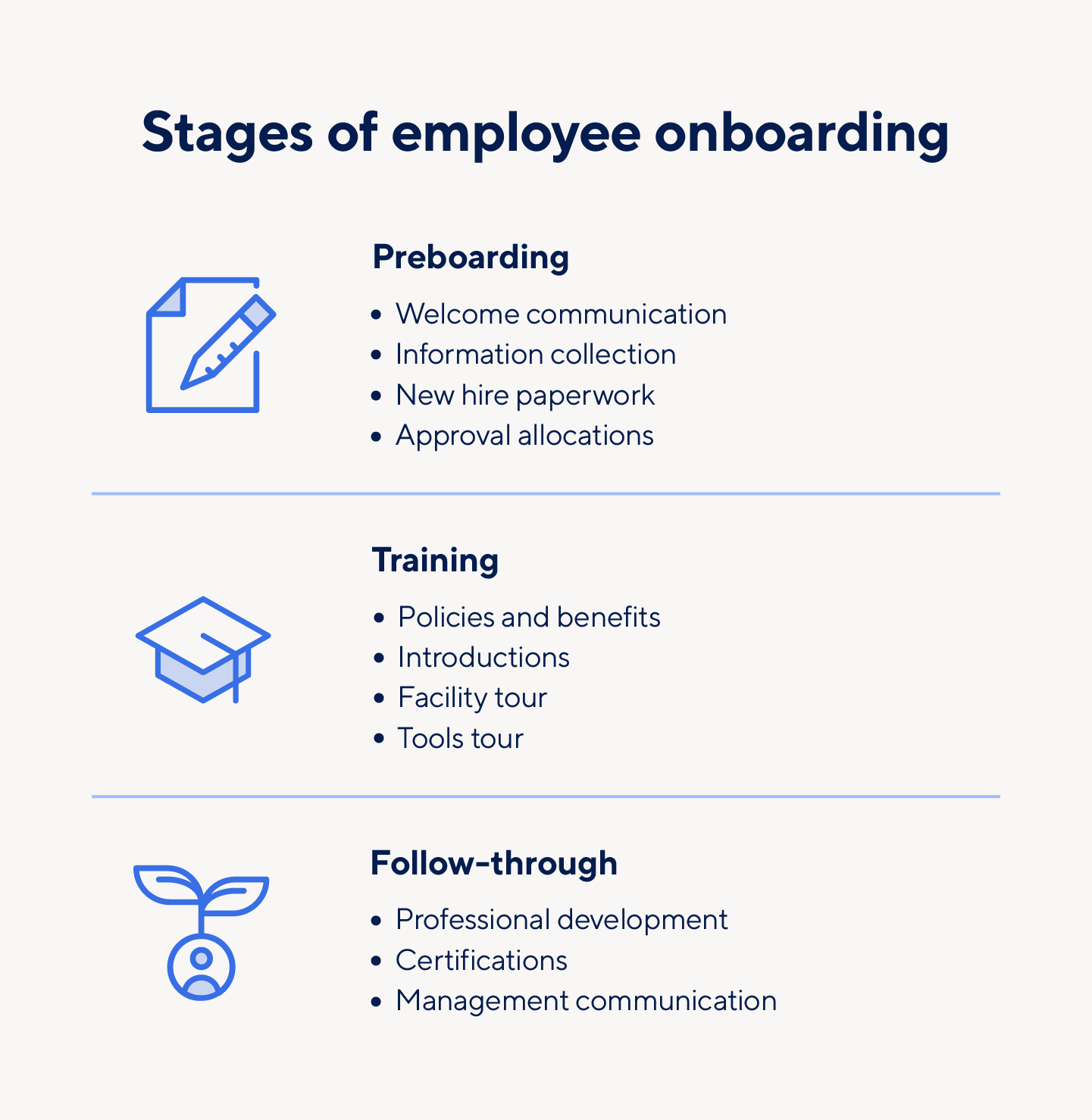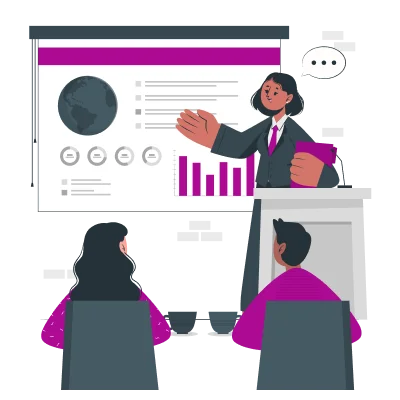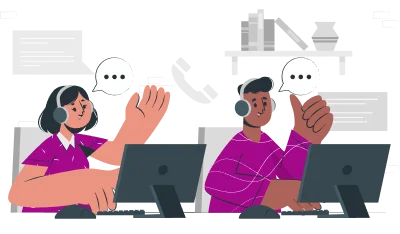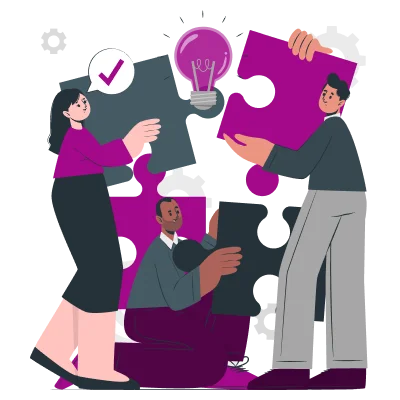In the rapidly evolving HRMS software industry, effective employee onboarding and offboarding process have become more crucial than ever for organizations seeking to optimize their Human Resource Management.
Employee onboarding and offboarding are the bookends of the employee life cycle. That cycle begins the moment a candidate accepts your offer, and it ends on the last day they work for your organization. In between lies the bulk of the employee experience, relationships with coworkers, projects attempted and completed, successes and failures, career progression and personal growth. But as with any long-term partnership, the beginning and ending have a huge impact on the entire experience, including what happens after the relationship.
Employee onboarding and employee offboarding are critical processes that, when done effectively, can deliver probable value and a positive return on investment. Likewise, ineffective employee onboarding and offboarding can harm almost every measurable metric of an organization. Employee onboarding and offboarding deserve HR’s close attention, with careful planning, execution, and analysis to ensure they are both being done right.
What is employee onboarding and offboarding?
Employee onboarding involves all the steps needed to get a new employee successfully deployed and productive, while offboarding involves separating an employee from a firm.
Onboarding and offboarding in modern workplaces:
Onboarding is the journey that begins when a candidate decides to join a company. It’s a comprehensive process that goes beyond basic orientation; it introduces a new hire to the organizational culture, ensuring they’re productive, engaged and connected.

It’s a necessary component in any organization’s strategy to advance employee retention, and it involves setting the foundation for the employee’s entire professional journey within the company.
On the other end of the spectrum is offboarding, which starts when an employee is about to depart. Offboarding is the structured procedure to handle the transition. Whether due to retirement, career shifts or other reasons, this process safeguards organizational knowledge, ensures smooth role transition and concludes the employee’s journey on a positive note.
Both onboarding and offboarding must adhere to various legal and compliance requirements, from contract management to labor laws. Ensuring that these processes comply with regulatory standards helps minimize legal risks and safeguard the organization’s reputation.
What Is Onboarding?
Onboarding is the process of integrating a new employee into the internal organizational system of a company. Onboarding is not a single step, but a series of steps that only ends when an employee begins to consistently perform at a predetermined level.
This series of steps can be referred to as the onboarding process, and it begins when an applicant signs their formal offer letter. Onboarding can last months; the length of the process depends on the skills, abilities, and performance of each new employee, and the internal norms of the organization.
Why Is Onboarding Important?
A strong onboarding process is one of the first impressions a new employee receives of your company. The way an employee is trained can greatly impact the processes of an entire organization. Plus, supportive onboarding programs can quickly highlight both the strengths of new team members and potential areas for growth.
Effective onboarding programs also have various organizational benefits:
- Minimized risk: Employees supported by strong onboarding programs are more likely to be engaged in their work, and to understand the mission and values of their organization, which can help manage risk.
- Retention: Onboarding programs that promise to invest in new employees, while carefully and thoroughly guiding them through expectations and new initiatives, can help increase retention.
- Increased engagement: A majority of employees agree that professional, job-specific training programs help increase their work engagement at the start of their employment.
- Potential ROI: Supported employees are more likely to strive for (and reach) employment goals, achieving higher returns on their personal and professional investments.
- Employee productivity: Elevated onboarding programs help initiate relationships between new employees and other departments. They help an employee get situated with the organization’s learning tools, programs, and software.
- Improved communication: Employees meet and engage with various team members during the onboarding process, which can encourage one-on-one communication within teams and across departments.
- Improved compliance: New employees are immediately introduced to company codes of conduct and software goals, which can help them stay aware of compliance expectations throughout their employment.
How Long Is the Onboarding Process?
Onboarding experts and organizational leaders agree that the onboarding process should take at least three months to be the most effective. However, the length of an onboarding process is unique for every organization and every employee.
There are a few main factors that can affect the length of the onboarding process, including the following:
- The types of programs and software an organization uses
- The department sizes within an organization
- The seniority and position a new employee is filling
- The role expectations an employee is expected to fulfill
It’s important to ask for feedback from new and current employees about their onboarding experience at your organization. They have the best insights into the program’s process, like how long it should take and what needs to be covered within certain periods of time.
Stages of the Employee Onboarding Program:
The timeline and procedures within an onboarding process are unique to individual organizations, but most programs still include three general stages that begin after a candidate signs an offer letter: preboarding, training, and follow-through.

1. Preboarding Stage
The preboarding stage of the onboarding process begins a week before an employee is expected to begin working for an organization. This stage includes preparation such as welcome communication, collecting personal information, new hire paperwork, and approval.
Let’s take a look at each of these steps in more detail:
- Welcome communication: Introduce an employee to their training contacts and give a brief overview of the onboarding process.
- Information collection: Collect and verify the employee’s personal information, including their legal name.
- New hire paperwork: Prepare new hire paperwork, including compliance, benefits forms, nondisclosure agreements, and handbook acknowledgment forms.
- Approval allocations: Determine tool access and license approvals an employee will need before beginning training.
2. Training Stage
The second stage of onboarding is the training stage: begins on an employee’s start date. It typically lasts about one week and frequently includes common organizational training, such as policy and benefits training, introductions, an office tour, and a tools tour.
Let’s look at these in more detail:
- Policy and benefits training: Employees receive training on the company’s policies, expectations, and employee benefits.
- Introductions: Employees are introduced to managers, team members, other coworkers, and company leadership.
- Facility tour: If working in person, employees receive a tour of the organization, including every department’s facilities.
- Tools tour: At this stage, employees are introduced to the online and physical tools they’ll need to successfully carry out their responsibilities.
3. Follow-Through Stage
The third stage of the onboarding process is the follow-through stage. This stage is ongoing and typically lasts around six months or through the end of an employee’s trial period. This stage focuses on the development of the employee as a whole, including the following:
- Professional development: Management should organize regular on-the-job trainings and encourage employees to regularly engage.
- Certifications: Organizations should encourage employees to receive external training for certifications.
- Manager communication: Managers should consistently communicate with employees to discuss problem areas or deliver constructive feedback and praise.
What Is Offboarding?
Offboarding refers to the actions both an employer and employee take after an employee communicates their intention to leave a company. During this time, employees are removed from organizational systems and access to company programs. Offboarding is an essential part of company security, it allows organizations to ensure their systems are only accessible to authorized parties. Before and during employee offboarding, organizations should consider the potential challenges of the process, including
Why Is Offboarding Important?
No matter who leaves an organization, the offboarding process is essential. This is a time when employees and company leadership can engage in open, authentic communication concerning an employee’s time at an organization.
Offboarding allows organizations and employees to respectfully communicate about the following:
- Insights: Employers and former employees can discuss which processes in the organization worked or didn’t work, and suggest various improvements.
- Frustrations: Departing employees may leave an organization frustrated with a company’s policies, procedures, and processes. During the offboarding process — usually in an exit interview — these employees have the opportunity to express these concerns.
- Role transitions: Offboarding is for more than just former employee-to-leadership communication. It’s also when managers are expected to communicate to organizational teams about the potential transitions that could occur after an employee’s departure.
How Long Is the Offboarding Process?
The duration of offboarding, like onboarding, depends on the organization’s specific processes. Even so, the amount of time an organization has to complete its offboarding obligations depends on the circumstances of an employee’s leave.
Additionally, offboarding can be affected by other factors, such as the following:
- The standing of an employee’s relationship with the organization
- The reason for departure, which can be determined by the employee or organization
- The ability of an organization to transition teams or other employees without too much disruption
- The timeline stated by an employee in a letter of resignation
Offboarding can be sudden, due to either voluntary or involuntary departures. This means the parties may have anywhere from a few weeks to a single day to complete the process. The organization needs to evaluate each different scenario to determine the duration of the offboarding process.
Offboarding Process: What to Consider
The offboarding process is a crucial step in the employee lifecycle, but it needs to be facilitated carefully. Before creating an offboarding checklist and determining the essential steps in the process, consider these factors:
- Relationship maintenance: Expressing a commitment to maintain professional relationships with former employees can reiterate that the organization is also committed to its professional relationships with current and future employees.
- Business health: In addition to relationship maintenance, offboarding processes can focus on organizational insights and company expectations. This can help an organization clarify and build on the values it prioritizes.
- Risk management: There are security and legal risks during and after offboarding. Processes designed to minimize these risks help protect the organization’s relationships with past, present, and future employees.
- Exit interviews: Exit interviews — for both voluntary and involuntary departures — can cause tension. However, they can also help organizations understand areas of growth and strength. Carefully consider your discussion questions before conducting an exit interview, and understand the complications that could arise from disgruntled or angry former employees.
Onboarding and Offboarding Compliance Tips:
While individual organizations determine their own onboarding and offboarding processes, there are still various industry expectations and requirements these processes need to meet. Compliance tips can help organizations guarantee they’re operating within the law.
- Documentation
Standard onboarding and offboarding procedures across departments involve careful documentation. Create standard operating procedure (SOP) documents detailing the processes across each employee lifecycle. Additionally, companies should document other organizational changes, including any disruptions or changes to an employee’s user access and accounts.
- Automation
Where possible, onboarding and offboarding procedures should include automation, as it can help organizations keep data updated and accurate. For example, employee data collection and backups should be automated so organizations consistently have factually correct information concerning employee performance.
- Reassessment
Organizations are responsible for reassessing documentation and processes, even after their initial adoption. As technology evolves, employee trainings and resources need to update as well. Reassessment is also necessary for keeping the employee lifecycle secure from data or security breaches either internal or external.
- Synchronization
Organizations likely use a variety of software tools and online programs to run onboarding and offboarding procedures. Syncing these tools can help keep departments up to date on employee processes; doing so can also streamline operations without disrupting other projects, and help you to communicate staff changes efficiently.
Steps taken by HR Teams During Employee Onboarding
A well-structured employee onboarding and offboarding checklist are essential for a smooth organizational personnel transition. By meticulously planning and executing these processes, you ensure that new hires are efficiently integrated into your team while departing employees leave without leaving behind critical gaps. In the below step, we explore the importance of these employee offboarding checklist and how they can benefit your business.
1: Preparing the Workspace

Ensure the employee’s workspace has all necessary equipment, including a computer, phone, and stationery. This boosts productivity and leaves a positive impression on new hires.
2: HR Document Compilation
Collect and organize all the required HR document, such as tax forms, insurance policies, and employment contracts. This step ensures compliance and sets the stage for smooth HR management.
3: Orientation and Training

Provide new hires with a thorough orientation, including company culture, policies, and job-specific training. This is where they start feeling like part of the team.
4: Introduction to the Team

Facilitate introductions to colleagues and team members to help new employees feel welcome. A sense of belonging fosters long-term commitment to the organization. With this step, you can do effective onboarding of new employees.
5: Employee Onboarding Software
Incorporate employee onboarding software like Bizzyeasy! HRMS to streamline and automate the process, making it more efficient and error-free. In the digital age, HRMS software is a game-changer, reducing manual workload and improving accuracy while reaping the benefits of an effective onboarding process, such as higher employee retention, quicker productivity gains, and smoother cultural assimilation.
6: Benefits and Perks
Communicate employee benefits, perks, and policies to ensure that new hires are well-informed. Employee satisfaction is often tied to bonuses, making this step vital for long-term engagement.
7: Continuous Support

Offer ongoing support and mentorship to help new employees navigate their roles effectively. This ongoing support allows employees to overcome initial challenges and excel.
8: Performance Expectations
Define clear performance expectations and objectives, ensuring that employees understand their roles. This clarity is essential for motivating employees to achieve their best.
9: Feedback and Evaluation
Establish a feedback mechanism for regular evaluations and performance discussions. Constructive feedback is a cornerstone of continuous improvement, making this step vital for employee development.
10: Employee Engagement

Encourage employee engagement and participation in company events and activities to foster a sense of belonging. Employees who are actively engaged are likelier to remain with the company, positively impacting its success.